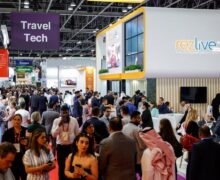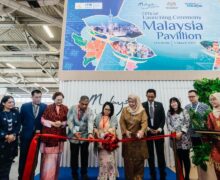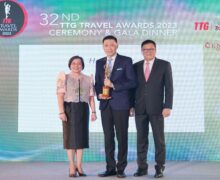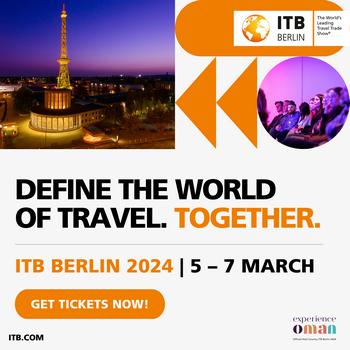PM Lee Hsien Loong at the ASEAN Tourism Forum
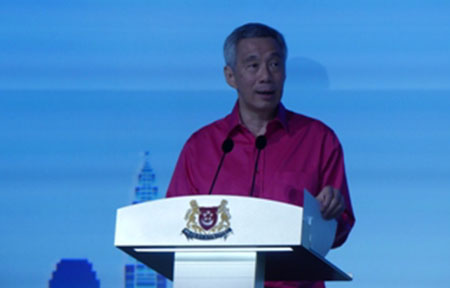
Prime Minister Lee Hsien Loong’s speech at the opening gala of the ASEAN Tourism Forum 2017 on 18 January 2017.
ASEAN Secretary General, His Excellency Mr Le Luong Minh, Tourism Ministers, Ambassadors, distinguished guests, ladies and gentlemen.
A very warm welcome to all of you to Singapore for the ASEAN Tourism Forum 2017. This is the first event that Singapore is hosting for ASEAN during its 50th anniversary. The theme – “Shaping our Tourism Journey Together” – is an apt one, because it reflects our commitment to work together to overcome shared challenges and create opportunities for our people in ASEAN.
This spirit of regional cooperation is all the more important in these uncertain times. Last year saw Britain vote for Brexit in a referendum, the US elect a non-establishment candidate as its next President, and Europe distracted by popular anxiety about jobs and immigrants, and doubts about the whole European integration project. In many countries, the mood is to go it alone, unilaterally push for their own interests, and doubt the value of mutual give and take in a rules-based international order.
In this uncertain global environment, ASEAN is an important life raft for all of us. ASEAN members have worked steadily and hard over the decades, to build up our cooperation and to benefit one another. Last year we established the ASEAN Community. We have made regional cooperation a success in Southeast Asia. This year, we have good reason to celebrate ASEAN’s 50th anniversary together.
While ASEAN has made significant progress, there is a lot more work to be done. In the economic field, we have to press on to deepen economic integration and boost connectivity among ASEAN countries, for example through the Regional Comprehensive Economic Partnership (RCEP) and the Master Plan on ASEAN Connectivity. In security and counter-terrorism, we have to work more closely to share intelligence, counter extremist ideology and disrupt terrorist networks. In social and cultural areas, we have to continue to foster people-to-people ties. ASEAN’s objectives are not quite as ambitious as the EU’s, but if ASEAN can build on what we have achieved, and deepen our cooperation across the board, all our peoples will benefit.
Tourism is one area where by working together, we can get win-win benefits, growing our economies, creating jobs, and drawing our peoples together. There is huge potential in tourism. ASEAN countries have fast growing middle classes, and as our people become better off, more affluent, more of them will want to travel and see the world. It is already happening. At the same time, ASEAN itself offers an enormous richness of attractions. If your interest is in ancient civilisations, there are Angkor Wat, Borobudur or the Bagan Temples. For beaches, you can go to Cebu, Phuket, Bali or Hoi An. If you want to climb mountains and walk valleys, you can go to Kota Kinabalu or Sapa. For nature, there are parks and nature reserves in Brunei, caves in Mulu, waterfalls in Luang Prabang. If you want vibrant cities, there are Kuala Lumpur, Bangkok, and Singapore. That is why tourists from around the world want to visit Southeast Asia.
Therefore, I am glad that we are launching the “Visit ASEAN@50” campaign, to promote ASEAN as a single, unified travel destination. We hope to increase the number of international arrivals by 10% to 121 million. This is an entirely achievable objective.
But working together is much more than jointly marketing ASEAN through campaigns and promotions. We also need to do the less glamorous behind the scenes hard work, overcome problems and build capabilities, and thus create the basis for a vibrant tourism industry. Developing infrastructure such as roads, ports and airports. Training people in the skills needed by the tourism industry. Reducing barriers and red tape which make it difficult for us to promote ASEAN as one rich destination.
May I suggest three things that we can do to make a difference.
First, we should continue to strengthen our air links. Affordable and convenient air travel is one of the most important factors driving tourism growth. The more flights are available, and the more affordable they are, the more tourists will come, and the more tourism will prosper. We have already made some important progress on this. The annual air seat capacity of the flights to and within ASEAN has more than doubled over the last ten years. Budget airlines have changed the game, making destinations affordable for millions more tourists. But there is huge potential for tourist numbers, and air passengers, to grow further. All ASEAN members have ratified an Open Skies Agreement and we therefore look forward to more flights, and more tourists.
Second, we should build up cruise tourism, which has immense potential for development. This is growing in popularity in North Asia and Australia. ASEAN is well placed to promote cruise tourism. We have archipelagos in ASEAN to rival the Aegean, the Caribbean, or the South Pacific. We have year-round tropical weather and calm waters. We have diverse and attractive destinations within short sailing distances. But developing cruise tourism is a multilateral effort. We need to develop port infrastructure to receive bigger and newer ships. We need to work with cruise providers to create attractive alternative itineraries with multiple stops for tourists. Singapore is happy to be the lead coordinator for the ASEAN Cruise Development Initiative. We need to work together closely to make these happen, and harness opportunities under the “Cruise Southeast Asia” brand.
Thirdly, we must develop our tourism talent. In ASEAN, we have the natural advantage of cultures that are warm, friendly, and courteous, so visitors immediately feel comfortable and welcome. But our workers also need specific skills, to run hotels properly, manage inventories and logistics, supply guides and interpreters, so that we can deliver the high standards that international tourists are accustomed to. It is win-win, because investing in our workers also create opportunities and good jobs for our people. Thriving tourist destinations such as Bali, Siem Riep, or Ha Long Bay show how the local population can benefit. Many ASEAN countries have made human resource development a priority. Singapore is glad to make a modest contribution to these effort, with initiatives like the Singapore-Myanmar Vocational Training Institute, which trains young people for jobs in the tourism industry. Therefore, I am pleased that the ASEAN Tourism Research Association (ATRA) will be offering two post-graduate scholarship schemes, and that four universities in Singapore, Malaysia, Thailand and Indonesia have pledged to offer scholarships to support this scheme.
ASEAN cooperation in the tourism sector demonstrates clearly the benefits of regional cooperation. Through greater openness and mutual interdependence, we will generate more opportunities and prosperity all round. We therefore look forward to visiting your countries, and experiencing the richness of your cultures and the warmth of your peoples, for many years to come. I wish you all a very successful ASEAN Tourism Forum.
Thank you very much.
source: pmo.gov.sg


